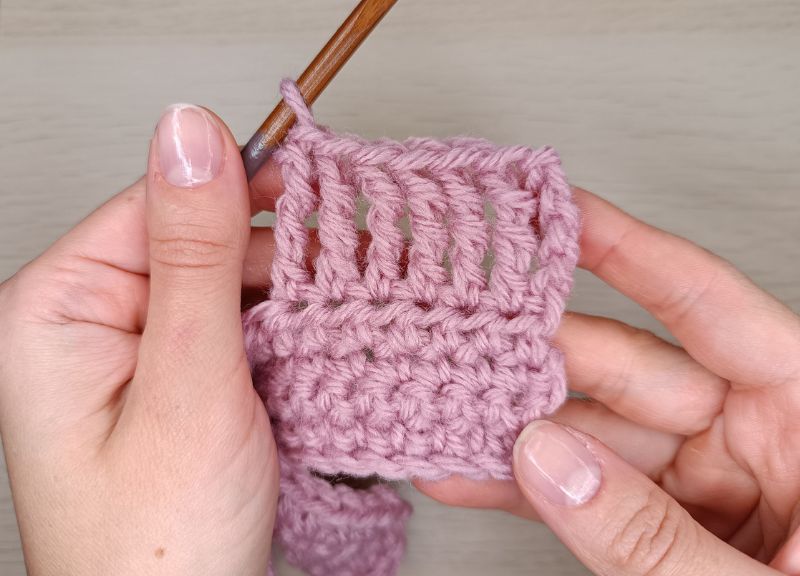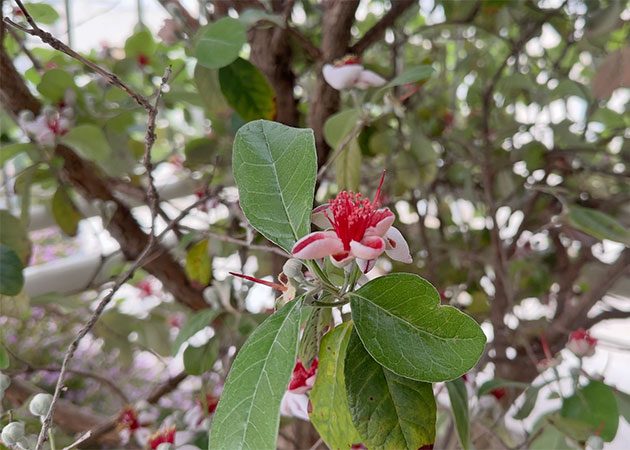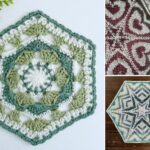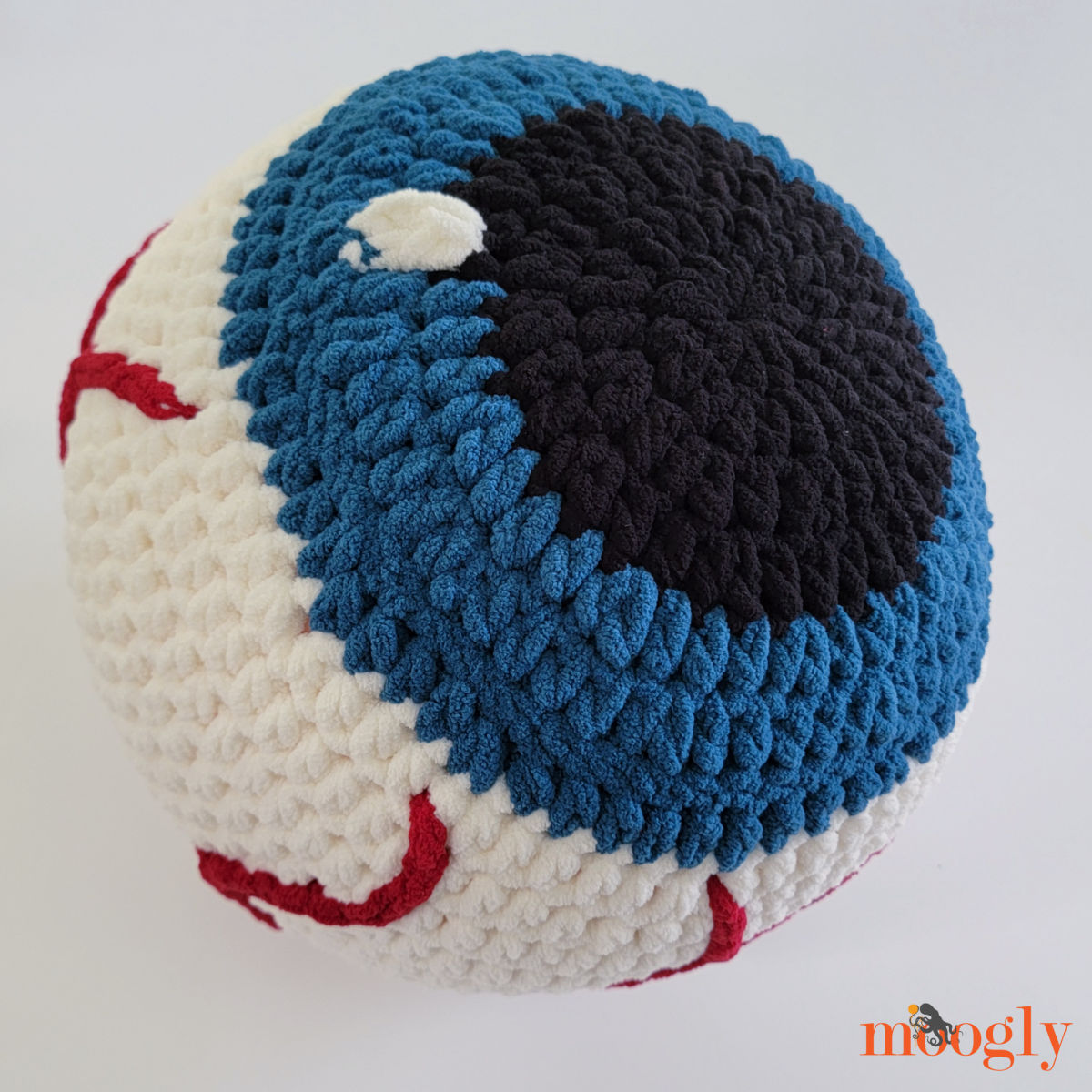The double treble crochet stitch, abbreviated as “dtr” in the US and “trtr” in the UK, is one of the tallest basic stitches in the art of crochet. This stitch is particularly valued for its dramatic height and loose, airy texture, which make it ideal for crafting delicate, lacy fabrics such as shawls, decorative trims, and openwork designs in garments.
Learning how to execute the double treble crochet stitch effectively can open up new possibilities for intricate and fast-growing projects, as it allows for significant coverage with fewer rows. Follow the double treble crochet stitch guide by PatternCenter, and you’ll master it in no time!
How to Crochet a Double Treble Stitch
We’ll start with detailed written instructions on how to create a double treble stitch, and below, you’ll find a comprehensive video tutorial to help you master your skills.
Step-by-Step Guide to Crocheting a Double Treble Stitch
If you’re new to crocheting and need to learn how to start, check out our basic slip knot and chain stitch crochet tutorials.
Yarn over thrice
Begin by yarning over (yo) three times. This is crucial as it sets the foundational length of the stitch.
Insert the hook
Insert your crochet hook into the designated stitch where you want to add the double treble.
Draw up a loop
Yarn over once more and draw through the stitch. This action will leave you with five loops on your hook.
Work the loops off
- Yarn over and draw through the first two loops on your hook. Four loops remain.
- Yarn over again and draw through the next two loops. Three loops remain.
- Yarn over and draw through two loops again. Now, two loops remain.
- Yarn over one final time and draw through the last two loops on your hook.
Each of these yarn over and pull through actions gradually builds the height of the double treble stitch, creating a tall and elongated structure.
Video tutorial on how to do double treble crochet stitch
Watch this engaging video tutorial by YourCrochet.com demonstrating the double treble crochet stitch. This visual guide will help you master the stitch quickly and effectively.
Tips for Crocheting a Double Treble Stitch
Maintain even tension
Given the height and the multiple yarn overs involved, maintaining an even tension is crucial to ensure that your double treble stitches are consistent in size and appearance.
Stablehand position
Hold your working yarn and the loops on your hook steadily. A stable hand helps manage the large number of loops and prevents them from unraveling or becoming too tight.
Hook size
Use an appropriately sized hook for your yarn to make handling the multiple yarn overs easier. A too small hook can make working through all the loops challenging, while a crochet hook that is too large can make the stitches overly loose and uneven.
Common Mistakes and How to Avoid Them
Dropping loops
One of the most common mistakes when making a double treble stitch is accidentally dropping one of the yarn overs. This typically happens because of too much slack in the working yarn.
Focus on the yarn tension and the placement of yarn overs on the hook. Make sure each loop is securely held but not too tight, allowing smooth transitions through each step.
Inconsistent stitch heights
Another frequent issue is the varying heights of stitches, which can lead to a messy and uneven fabric.
Practice the rhythm of yarning over and pulling through. Consistency comes with practice, so keep a steady pace and don’t rush through the steps.
Complex counting errors
Miscounting the initial yarn overs or the pull-through steps can alter the entire pattern.
Before proceeding to the next stitch, pause to count the yarn overs and completed loops. This pause helps ensure that you correctly form each double treble stitch.
Double Treble Stitch vs. Treble Stitch
Difference between double treble stitch and treble stitch
The double treble stitch is significantly taller than the treble stitch, resulting from the additional yarn over. This height difference creates a more open fabric with the double treble stitch.
When to use each stitch
Use double treble stitches for projects that require a very airy feel or when you need to build large heights quickly. Treble crochet stitches are better for slightly tighter yet still open textures.
Pros and cons of each stitch
If we talk about double treble stitch, its pros include rapid project progress and a decorative, lacy appearance. Its cons are that it can be too loose for some projects, requiring more attention to tension.
The pros of the treble crochet stitch are its versatility and faster completion than shorter stitches, while the cons might include a less open texture than the double treble.
Tips for choosing between double treble crochet and treble crochet stitches
Consider the project’s final appearance and how loose or open you want the fabric. The double treble stitch is ideal for more decorative elements.
Examples of Patterns Using Each Stitch
We have plenty of free crochet patterns for each stitch here at PatternCenter! Patterns such as large lace motifs or airy shawls may use double treble stitches, while you will often find treble stitches in lighter afghans or summer garments. Check out these posts to try it:
How to Read a Crochet Pattern
Crochet patterns can range from simple to complex and typically include abbreviations and symbols representing different stitches and techniques. Some of them include photo instructions and video tutorials, which greatly help. Here at PatternCenter, we have many crochet project roundups, and you can find a free pattern for everything you can imagine.
How to interpret abbreviations
Familiarize yourself with standard crochet abbreviations like “dtr” for double treble or “tr” for treble, which are crucial for following patterns accurately.
Here’s a handy comparison table of crochet abbreviations showing the differences between US and UK terminology. This will help you navigate patterns from different sources more effectively, ensuring you use the correct stitch types for your projects:
| US Term | UK Term | Abbreviation (US/UK) |
| Slip stitch | Slip stitch | sl st / sl st |
| Single crochet | Double crochet | sc / dc |
| Half double crochet | Half treble crochet | hdc / htr |
| Double crochet | Treble crochet | dc / tr |
| Treble crochet | Double treble crochet | tr / dtr |
| Double treble crochet | Triple treble crochet | dtr / trtr |
| Triple treble crochet | Quadruple treble crochet | ttr / qtr |
| Chain | Chain | ch / ch |
This table not only outlines the different stitch names but also shows the respective abbreviations used in patterns. Understanding these differences is crucial to ensure you apply the right stitch type and size throughout your crochet projects, especially when following international patterns.
Understanding symbols and notations
Crochet diagrams often use symbols to denote stitches. For example, a long dash or a tall “T” might represent a double treble stitch.
Here’s a table of common symbols and notations used in crochet diagrams and patterns. These symbols are typically found in visual crochet patterns, especially those from international sources. Understanding these symbols can help you follow patterns more efficiently and accurately.
| Symbol | Description | Common US Abbreviation |
| – | Chain stitch | ch |
| + | Slip stitch | sl st |
| X | Single crochet | sc |
| T | Half double crochet | hdc |
| Y | Double crochet | dc |
| V | Treble crochet | tr |
| W | Double treble crochet | dtr |
| II | Triple treble crochet | ttr |
| O | Picot | pic |
| ⌒ | Cluster or group of stitches | cl |
| ≈ | Popcorn stitch | pc |
| Λ | Increase | inc |
| V | Decrease | dec |
| ↝ | Spike stitch | – |
| /// | Front post double crochet | fpdc |
| *\* | Back post double crochet | bpdc |
This table provides a basic overview of pattern diagrams’ most common crochet symbols. Each symbol corresponds to a specific stitch or technique, helping you visualize the construction of a crochet piece more vividly. When using patterns from different countries, it is essential to be familiar with these symbols, as they can significantly aid in understanding complex instructions without relying solely on written descriptions.
Tips for following crochet patterns
Always read through the entire pattern before starting to understand the project’s scope and required materials and techniques.
Resources for finding crochet patterns
You don’t need any other resources except PatternCenter, as we offer a wide range of crochet patterns for beginners to advanced levels. We’ll follow you to the original free crochet patterns of various talented designers so you can create any project you like: blanket, coaster, hat, amigurumi toy, dress, summer top, cardigan, poncho, or cat accessories. Anything you need is already here!
Resources for Learning and Mastering Double Treble Stitch
Online tutorials and videos
Click HERE and explore the video tutorial we prepared for you for visual and step-by-step guides on the double tr stitch.
Crochet classes and workshops
Many local yarn stores and community centers offer classes that can provide hands-on experience and personalized guidance.
Books and instructional guides
Look for crochet books at your local library or bookstore that include sections on advanced stitches and techniques. If you’re new to crochet, we suggest you take a Course for Beginners by YourCrochet.
Tips for Practicing and Improving Double Treble Stitch
Regular practice, starting with simpler projects incorporating the stitch, will help solidify your skills and confidence.
Join our Facebook group to ask questions, share projects, and learn from others.
FAQ
What is the difference between a treble and double treble stitch?
The primary difference between a treble and a double treble stitch lies in their height and the number of yarn overs. A treble crochet involves yarning over twice before inserting the hook, while a double treble crochet requires three yarn overs, making it taller and producing a looser fabric. This additional height in the double treble allows for more open and airy designs.
How can I use a double treble stitch to create a lacy effect in my crochet projects?
Due to its height and openness, the double treble crochet stitch is excellent for creating lacy effects. By spacing out double treble stitches with chains or incorporating them into openwork patterns, you can create elegant, delicate textures ideal for shawls, curtains, or lightweight throws.
What are some common mistakes to avoid when working with double treble stitches?
Common mistakes include losing count of yarn overs, which can alter the height of the stitch, and pulling through too many loops at once, which can cause the stitch to unravel or become too loose. To maintain stitch integrity, ensure accurate yarn overs and carefully complete each step of pulling through loops.
Read more detailed answers in the Common Mistakes and How to Avoid Them section above.
Can I use a double treble stitch in place of a treble stitch in my patterns?
While you can substitute a double treble stitch for a treble stitch, it will affect the fabric’s texture, drape, and gauge. This substitution creates a taller and more open fabric, which may be desirable depending on your project’s requirements.
Are there any alternative names for the double treble stitch?
In the UK, the double treble is often referred to as the “triple treble crochet,” which can be abbreviated as “trtr” in patterns. This name highlights the extra height and yarn overs compared to the standard treble stitch.
How do I increase or decrease the height of my double treble stitches?
To adjust the height, you can modify the number of yarn overs. For example, adding an extra yarn over before beginning the stitch will create a triple treble stitch, increasing the height. Conversely, reducing a yarn over will decrease the height, turning it into a regular treble stitch.
Can I use a double treble stitch to create a textured or raised design in my crochet work?
Yes, you can use the double treble stitch to create textured or raised designs by working it in front post or back post techniques. These variations allow the stitch to protrude from the fabric, adding depth and interest to your project.
How do I work a double treble stitch in the round?
When working a double treble stitch in the round, start by chaining the appropriate height (usually four or five chains), then proceed as you would in flat crochet, ensuring to join rounds with a slip stitch into the top of the beginning chain.
Are there any specific patterns or projects that are best suited for the double treble stitch?
The double treble stitch is particularly well-suited for large projects requiring quick progress and open, lacy designs, such as oversized shawls, airy blankets, or garments with a flowing, draped appearance.
What is the purpose of a yarn over in a double treble stitch?
In a double treble stitch, each yarn over adds height and creates the necessary loops on the hook to build the stitch’s structure. These yarn overs are crucial for achieving the loose, open texture characteristic of the double treble.
How do I fix a mistake in my double treble stitch without unraveling my entire project?
To fix a double treble stitch mistake, carefully unravel your work to the point of the error. Use a crochet hook to pick up the loops and rework the stitches correctly. Placing a stitch marker before starting complex sections can help identify where to stop if unraveling is needed.
Can I use a double treble stitch in combination with other stitches in my crochet work?
Absolutely, combining double treble stitches with other crochet stitches, such as single crochet or double crochet, can create varied textures and patterns, enhancing the visual interest and complexity of your project.
What are some tips for maintaining consistent tension when working with double treble stitches?
To maintain consistent tension, hold the yarn firmly and ensure that each loop on the hook is of equal size. Adjust your grip as needed, and take breaks if your hands become tired, as fatigue can affect tension.
How do I work a double treble stitch in a row or flat piece of crochet work?
To work a double treble stitch in a row, start by chaining enough to reach the desired height (typically four chains for a double treble), then yarn over three times and proceed with the stitch as usual, working into the chains or stitches from the previous row.
Are there any specific techniques or tricks for creating clean and neat double treble stitches?
For clean and neat double treble stitches, ensure that all yarn overs are even and that you pull through each pair of loops with controlled, even tension. Practice the stitch rhythmically to gain consistency, and consider using ergonomic crochet hooks to help manage the multiple loops and yarn overs comfortably.






